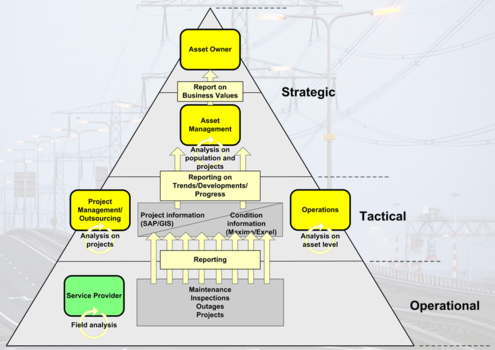Asset Maintenance in Distribution Network
Strategies & Technologies for Asset Maintenance Management in Electricity Distribution Network Utilities - A Risk-Based Approach

Project description
The almost worldwide trend of countries deregulating the power sector has brought about a complete change and presents immense challenges to electricity transmission and distribution network utilities. A major change is that many traditional utilities (responsible for generation, transmission and distribution) are now “network utilities” (responsible for transmission and distribution), which are concerned with spending related to physical infrastructures. These infrastructures are characterized by slow load growth, changing load patterns, aging equipment, regulatory uncertainties, stakeholders which are looking for ways to increase earnings, changed customer expectations, etc. As a consequence, electricity network utilities are expected to address these fundamental issues in the best way and many feel that the paradigm shift from technical managed systems to a socio-technical managed systems is the way to deal with the issues. In this context, asset management (AM) is introduced as the socio-technical system and is being adopted throughout many electricity network utilities.
With asset management the driver is to improve operational performance, while controlling expenditures. This leads to risk-based processes to manage performance, costs. The analysis and treatment of risk is such a technique, which is related to the predictability of future asset performance. Nevertheless, electricity network assets have complicated nature Firstly, they have non-financial aspects of performance and risk. Secondly, they are part of a highly complex interconnected system. Lastly, they require maintenance and replacement. This thesis deals with the issues surrounding maintenance management: defining a framework for maintenance management within a risk-based asset management model. This thesis discusses the organisational supporting pillars of maintenance management, which should be based on proper processes, decision-making tools and systems (technologies such as condition monitoring ) in order to achieve suitable levels of maintenance organization.